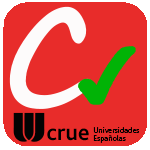Izenburua
An experimental methodology to improve the robotic drilling of aluminium alloysEgilea
Argitalpen data
2025Beste erakundeak
Université de Mons (Bélgica)Bertsioa
PostprintaDokumentu-mota
ArtikuluaHizkuntza
IngelesaEskubideak
© 2025 CIRPSarbidea
Sarbide bahituaBahituraren amaiera data
2027-04-30Argitaratzailearen bertsioa
https://doi.org/10.1016/j.cirp.2025.03.028Non argitaratua
CIRP Annals Vol. 74. N. 1. Pp. 103-107. 2025Argitaratzailea
ElsevierGako-hitzak
DrillingRobot
aluminium
ODS 9 Industria, innovación e infraestructura
UNESCO Sailkapena
Teknologia eta ingeniaritza mekanikoakLaburpena
In aeronautics, mastering the drilling process is crucial to meet strict quality standards. While robots provide a cost-effective solution for drilling large, complex parts, challenges arise in metall ... [+]
In aeronautics, mastering the drilling process is crucial to meet strict quality standards. While robots provide a cost-effective solution for drilling large, complex parts, challenges arise in metallic materials due to their low stiffness. This study establishes a systematic experimental method to improve hole quality during robotic drilling of aluminium alloys. Holes were drilled in plates in four positions and 64 postures using a 6 mm tool to analyse their influence on a new defect index. A static deflection compensation method was developed to improve hole quality, addressing static deflection issues narrowing the gap between robotic drilling and CNC machining. [-]




















